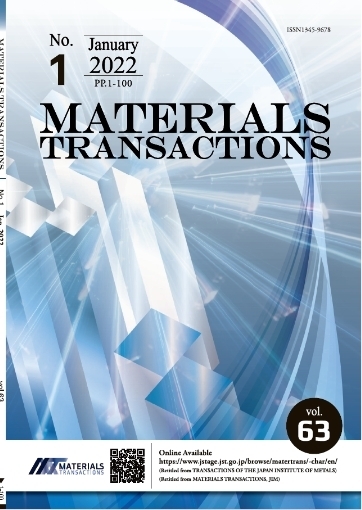The Effect of Severe Plastic Deformation on Thermoelectric Performance of Skutterudites, Half-Heuslers and Bi-Tellurides
Gerda Rogl, Michael J. Zehetbauer, Peter F. Rogl
pp. 2071-2085
抄録
Although thermoelectric materials with a figure of merit, ZT, higher than 1.2 have gained considerable interest in electric power generation, little is hitherto known on the influence of severe plastic deformation on thermoelectric performance. Severe plastic deformation is one of the elegant techniques to furnish ultrafine grained microstructure with a high level of point, linear and surface defects. Particularly the phonon scattering on these defects is used as a main route to reduce thermal conductivity in thermoelectric materials and - as a consequence - increasing ZT.The present article provides an overview on the achievements of the various techniques of severe plastic deformation to gain high figures of merit in the thermoelectric materials, commonly used in energy conversion devices, such as skutterudites, clathrates, Heusler phases, and bismuth tellurides.For all skutterudites, high pressure torsion, as one of the major techniques of severe plastic deformation processes, is a great tool to either enhance ZT of hot pressed samples or to directly produce fast and easily high ZT thermoelectric bulks. A still unsurpassed highlight is the enhancement of ZT from 1.6 to almost 2 (Sr0.09Ba0.11Yb0.06Co4Sb12) at 825 K.Whilst for thermoelectric clathrates so far little success was reported, high pressure torsion treatment of Heusler and Half-Heusler phases in some cases was able to boost ZT (VTa0.05Fe2Al0.95, rising ZT from 0.22 to 0.3) although the absolute ZT increases are still disappointing. For p- and n-type Half-Heusler alloys (NbFeSb- and TiNiSn-based) at least three temperature cycles are necessary to gain a thermally stable state, indicating that obviously the introduced defects and structure changes are more resistant against heat treatments than in case of skutterudites.Bismuth tellurides of type V1(VI)1 and/or V2(VI)3 (V, VI denote the group elements) have been already deformed by high temperature pressure or high temperature extrusion before the SPD methods were known, for the sake of improving ZT at least with temperatures 300–500 K, at most fighting with the condition to achieve a high electrical conductivity because of the strong anisotropy in these materials. By starting with ball milling followed by high temperature pressing at not too high temperatures, not only the electrical conductivity could be kept large but also the lattice thermal conductivity was diminished such that figures of merit up to ZT = 1.4 at T = 373 K were achieved. This value could be reached by many of the ECAP experiments published so far, although only across the sample long axis because of lattice anisotropy. First applications of HPT did not reach that ZT level as either the conditions of texture could be not fulfilled, or, above all, the processing rates and/or temperatures were too high. Recent investigations not having involved SPD found the importance of the lattice defects’ specific phonon scattering efficiencies, especially that of dislocations, and by introducing them in sufficiently high densities, enhancements of p-type Bi-Tellurides up to ZT = 1.9 were possible. These findings recommend the use of SPD methods here, not at least as they have been already applied very successfully by the authors of this review to both p- and n-type Skutterudites increasing the figure of merit up to ZT ∼ 2.As concerns mechanical properties, the application of SPD methods significantly raises the strength while leaving the elastic moduli unchanged unless new phases have been formed.










